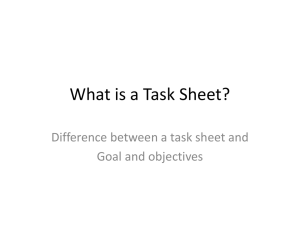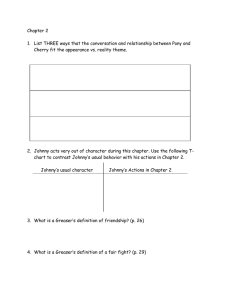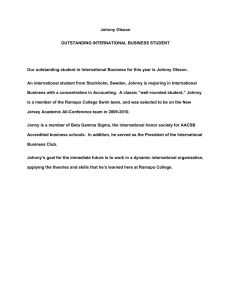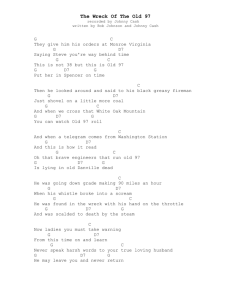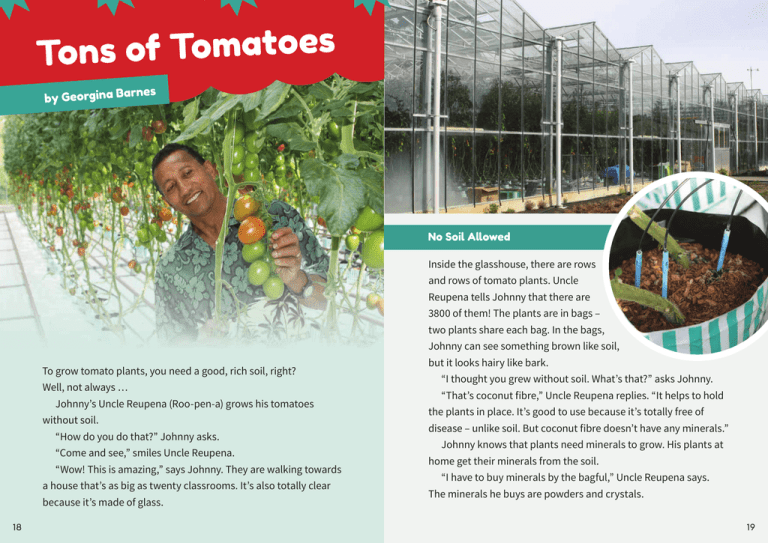
s
e
o
t
a
m
o
T
f
o
s
n
o
T
es
rn
by Georgina Ba
No Soil Allowed
To grow tomato plants, you need a good, rich soil, right?
Well, not always …
Johnny’s Uncle Reupena (Roo-pen-a) grows his tomatoes
without soil.
“How do you do that?” Johnny asks.
“Come and see,” smiles Uncle Reupena.
“Wow! This is amazing,” says Johnny. They are walking towards
a house that’s as big as twenty classrooms. It’s also totally clear
because it’s made of glass.
18
Inside the glasshouse, there are rows
and rows of tomato plants. Uncle
Reupena tells Johnny that there are
3800 of them! The plants are in bags –
two plants share each bag. In the bags,
Johnny can see something brown like soil,
but it looks hairy like bark.
“I thought you grew without soil. What’s that?” asks Johnny.
“That’s coconut fibre,” Uncle Reupena replies. “It helps to hold
the plants in place. It’s good to use because it’s totally free of
disease – unlike soil. But coconut fibre doesn’t have any minerals.”
Johnny knows that plants need minerals to grow. His plants at
home get their minerals from the soil.
“I have to buy minerals by the bagful,” Uncle Reupena says.
The minerals he buys are powders and crystals.
19
20
Working Water
With Strings Attached
Carefully following a recipe, Uncle Reupena
adds the minerals to big vats of water.
The water dissolves the minerals, and
then they are carried to the plants in the
water. Growing plants this way is called
hydroponics, which means “working water”.
But the vats of mineral solution are in the
control room, and the plants are in the main
part of the glasshouse. Johnny is puzzled.
How do the minerals get to the plants?
Back in the glasshouse, it looks totally
dry. Johnny can’t see any water. Then he
spies black pipes snaking along the floor.
Lots of small tubes branch off each pipe.
Each tube goes to a plant. Uncle Reupena
explains that the mineral solution is
pumped from the control room along the
pipes, through the tubes, and into each
plant bag.
Johnny notices strings that drop from
the ceiling. There is one for each plant.
The plants look small now, but they will
eventually grow up the strings. “Tomatoes
are actually vines,” Uncle Reupena says.
“They can grow as long as 30 metres –
that’s as long as three buses!”
Uncle Reupena shows Johnny how to
tie the plants to the strings. Then he points
at a row
r of plants. “You tie down this side of
the ro
row, and I’ll do the other side,” he says.
Th
The knot is tricky, and the stems are very
delic
delicate. Uncle Reupena finishes his side
while Johnny is still on his first plant.
“Y
“You win,” says Johnny. “It’s really hard!”
21
Checking Up
Flying Workers
“Can you see my workers?” Uncle Reupena asks.
Johnny can’t see anyone. Then Uncle Reupena shows him
a box. On the outside of the box, there is a picture showing its
contents. Johnny smiles. “Bumblebees!”
In his garden at home, Johnny has seen how pollen sticks to
the legs and bodies of bees as a yellow dust. As they fly from
flower to flower, the bees shift the pollen around. When the
flowers have been pollinated, they transform into fruit.
“I used to do the pollination myself,” Uncle Reupena says.
Johnny tries to imagine Uncle Reupena flying around the
glasshouse like a bee!
“It was a big job,” Uncle Reupena continues. “There are
over seventy flowers to pollinate on each plant. I had to walk
around and touch every flower with a feather. Imagine having
to do that to 3800 plants!”
These days, the bumblebees do the pollination. The bees
live for only a month, so Uncle Reupena replaces them every
three weeks.
22
As Johnny is leaving the glasshouse, Uncle Reupena
upena
shows him a box with two plants in it.
n the
Every day, Uncle Reupena places a meter in
he meter
water that runs out from these two plants. The
ther or
is a measuring instrument that tells him whether
not the plants are getting the right amount of minerals.
djust the recipe
If they’re not, Uncle Reupena has to quickly adjust
in the vats. Otherwise, the two plants and all the other plants
in the glasshouse could die.
Johnny has enjoyed finding out about hydroponics. He says
goodbye to his uncle but promises he will return to sample
some of the crop.
Six Months Later
An Interview with Reupena
Walking towards the glasshouse, Johnny
sees that it now looks completely full
of plants! Inside, leaves and bunches of
tomatoes cram every space. It’s time to
pick the fruit. Johnny wonders what the
picking machine will look like. It will have
to fit between the rows and not squash
the fruit.
When Uncle Reupena gives Johnny a
green crate, Johnny realises his hands will
be part of the picking machine.
Uncle Reupena’s wife, Eseta, their
When and where were you born?
children, and their grandchildren all help
hours. At night, I would study. I did that for over
to pick the tomatoes for market.
“We’ve been picking tomatoes for four
months now,” Uncle Reupena says. “By
the end of the season, we’ll have picked
about 300 000. When we’ve picked them
all, we’ll pull out the plants and get ready
for next year’s crop.”
He points to a big crate of tomatoes.
“Now, you still have one more job to do.
It’s time for the taste test!”
Are the tomatoes …
too watery?
not sweet enough?
or simply delicious?
24
I was born in 1957 in Magiagi, Western
Sāmoa, but I came to New Zealand to
do a horticultural apprenticeship.
What is the first thing you grew?
Actually, the first thing I grew was tomatoes!
That was when I was fourteen years old, and I
was at Leulumoega Fou College.
What was it like to do an apprenticeship,
and what did you learn?
I had to work hard in a nursery every day for nine
three years. I learned how to grow everything –
trees, plants, flowers, and vegetables.
Why did you decide to grow tomatoes?
Flowers are beautiful, but people always have to
eat, so I chose to grow vegetables. And tomatoes
are still the most popular vegetable. A tomato is
actually the fruit of the plant, but it is used as a
vegetable in cooking.
What would you say to anyone who wants
to be a horticulturist?
It’s good fun, and it’s also amazing to watch the
plants grow. Out of a little seed comes a big plant,
and a big plant feeds a lot of people.
25
Tons of Tomatoes
Tons of Tomatoes
SCHOOL
L
JOURN20A
14
nes
by Georgina Bar
by Georgina Barnes
NOVEMBER
Text copyright © Crown 2014
Photographs copyright © Georgina Barnes
To grow tomato plants, you need a good, rich soil, right?
Well, not always …
Johnny’s Uncle Reupena (Roo-pen-a) grows his tomatoes
without soil.
“How do you do that?” Johnny asks.
“Come and see,” smiles Uncle Reupena.
“Wow! This is amazing,” says Johnny. They are walking towards
a house that’s as big as twenty classrooms. It’s also totally clear
because it’s made of glass.
For copyright information about how you can use this material, go to:
http://www.tki.org.nz/Copyright-in-Schools/Terms-of-use
Published 2014 by the Ministry of Education
PO Box 1666, Wellington 6011, New Zealand.
www.education.govt.nz
All rights reserved.
Enquiries should be made to the publisher.
18
SCHOOL JOURNAL LEVEL 2, NOVEMBER 2014
ISBN 978 0 478 44618 0 (online)
Publishing services Lift Education E tū
Series Editor: David Chadwick
Designer: Jodi Wicksteed
Literacy Consultant: Melanie Winthrop
Consulting Editors: Hōne Apanui and Emeli Sione
Curriculum learning area
Science
Reading year level
Year 4
Keywords
tomatoes, growing, soil, glasshouse,
horticulture
2
LEVEL

